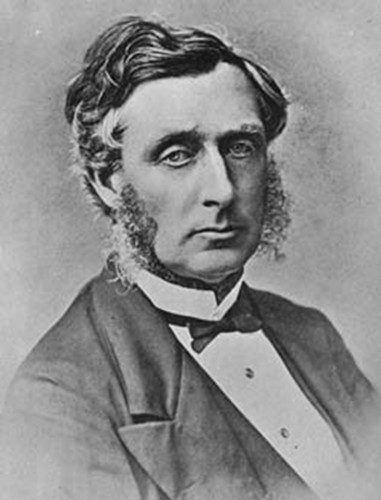South Coast NSW History Story
T.S. Mort
Thomas Sutcliffe Mort has variously been described as an art gallery owner, auctioneer, coalmine owner, company director, copper mine owner and manager, dairy farmer, dairy products manufacturer, financier, grazier, horticulturalist, industrialist, investor, landowner, land speculator, manufacturer, philanthropist, wharfinger and wool broker.
He was born in Leicestershire, England, in 1816. He arrived in Sydney in 1838 to take up employment as a clerk.
In September 1843 he became an auctioneer and initiated the first regular wool sales in Sydney. In the late 1840s he started auctioning livestock and pastoral properties. By 1850 he was the leading auctioneer in Sydney.
In 1855 he opened Mort’s Dock in Balmain, Sydney’s first major dry dock for repairing ships. This induced companies operating regular mail services to make Sydney the terminus for their steamers.
In 1866 the dry dock expanded to become an engineering works. In 1870, in an attempt to improve labour relations, Mort offered the employees of the dock and engineering works a half share in the enterprise – an unusual, if enterprising, move.
In 1856 he took an interest in a 12,998 acre parcel of land south of the Tuross River named ‘Boat Alley’ (which later became Bodalla). By 1860 he was sole proprietor of it. He initially planned to build a country residence on part of the land, but soon decided he would instead develop the property into a model of land utilisation that included a model rural settlement. Eventually Mort was to own 38,000 acres in the Moruya-Bodalla-Tilba area and the Bodalla Estate and its produce, particularly dairy products, became widely known and very highly regarded.
In February 1875 the Sydney Mail & NSW Advertiser suggested: ‘One of the things best worth seeing at Bodalla is the good understanding subsisting between Mr Mort and his people. He is careful of their interests, and they reciprocate. He seems to be an adviser, doctor, friend and pastor – the feeling heart as well as the devising head. From the children upwards, everyone greets his approach, and it seems to be a grand day at Bodalla when the master comes.’
Thomas Mort was especially interested in developing refrigeration for the transportation and preservation of milk and meat. His first refrigeration patent was taken out in 1861, the same year as he opened the first freezing works in the world at Darling Harbour in Sydney. This was later to become the giant NSW Fresh Food and Ice Company.
Among many other pursuits, Mort was one of the founders of the AMP Society and was a Director of the Sydney Railway Company which sought to construct the first public railway in Sydney.
Mort & Co, which had been established in 1843, became Goldsborough Mort & Co in 1888, then Elders Smith Goldsborough Mort Ltd in 1963.
Mort was a prominent Anglican layman. He donated the land on which St Mark’s Church, Darling Point, was constructed and he contributed to the building of Sydney’s St Andrew’s Cathedral.
When he died in 1878, at the age of 61, Mort was described as ‘the greatest benefactor the working class in this country ever had’. The Sydney Mail & NSW Advertiser printed a full-page portrait of him in their 25th May 1878 edition ‘for people to hang in their homes’, commenting ‘we are confident that the portrait will be prized and treasured in many households which owe, or have owed, their comfort and content in no small degree to the manner in which the enterprise and patriotism of Mr Mort caused capital to circulate by the establishment or initiation of industries new to the colony.’
A sculpture in Macquarie Place, Sydney, was erected his honour in 1883, paid for by public subscription. The Sydney suburb of Mortdale is named after him.
Sources: Australian Dictionary of Biography; State Library of NSW websites; wikipedia
